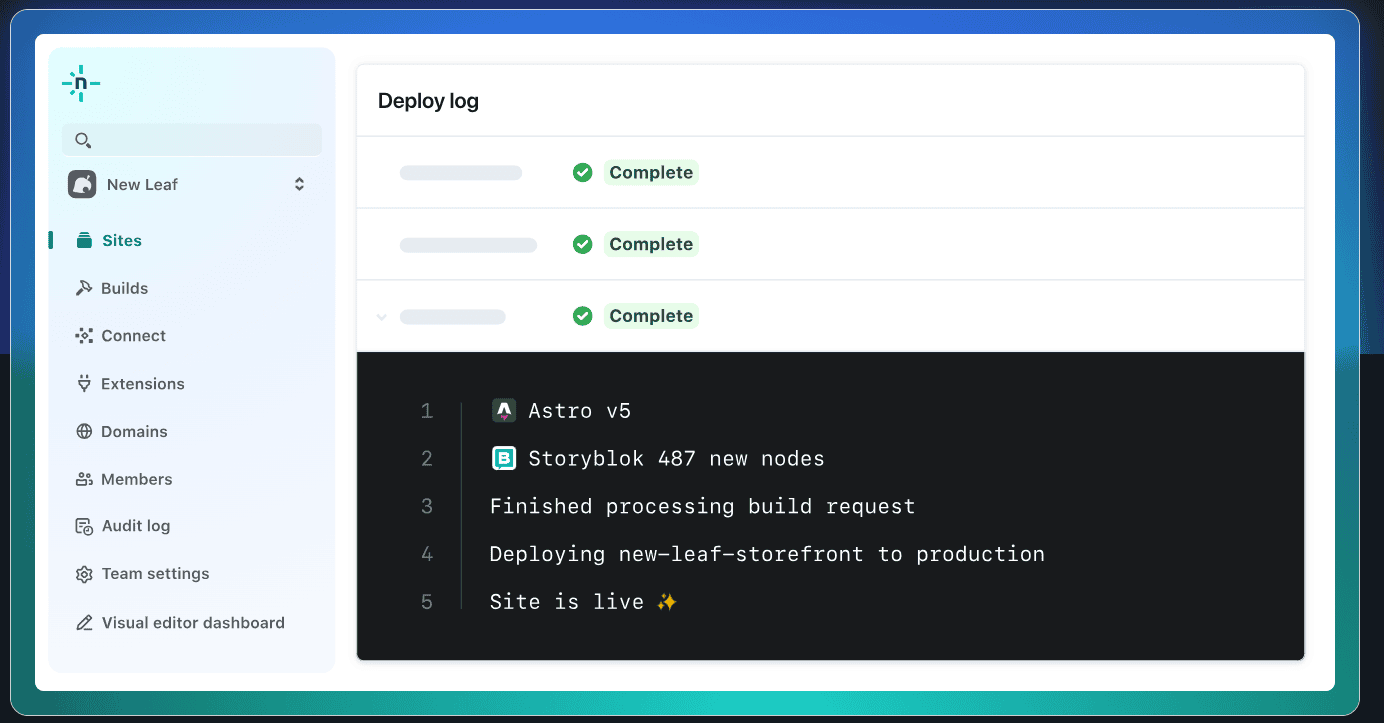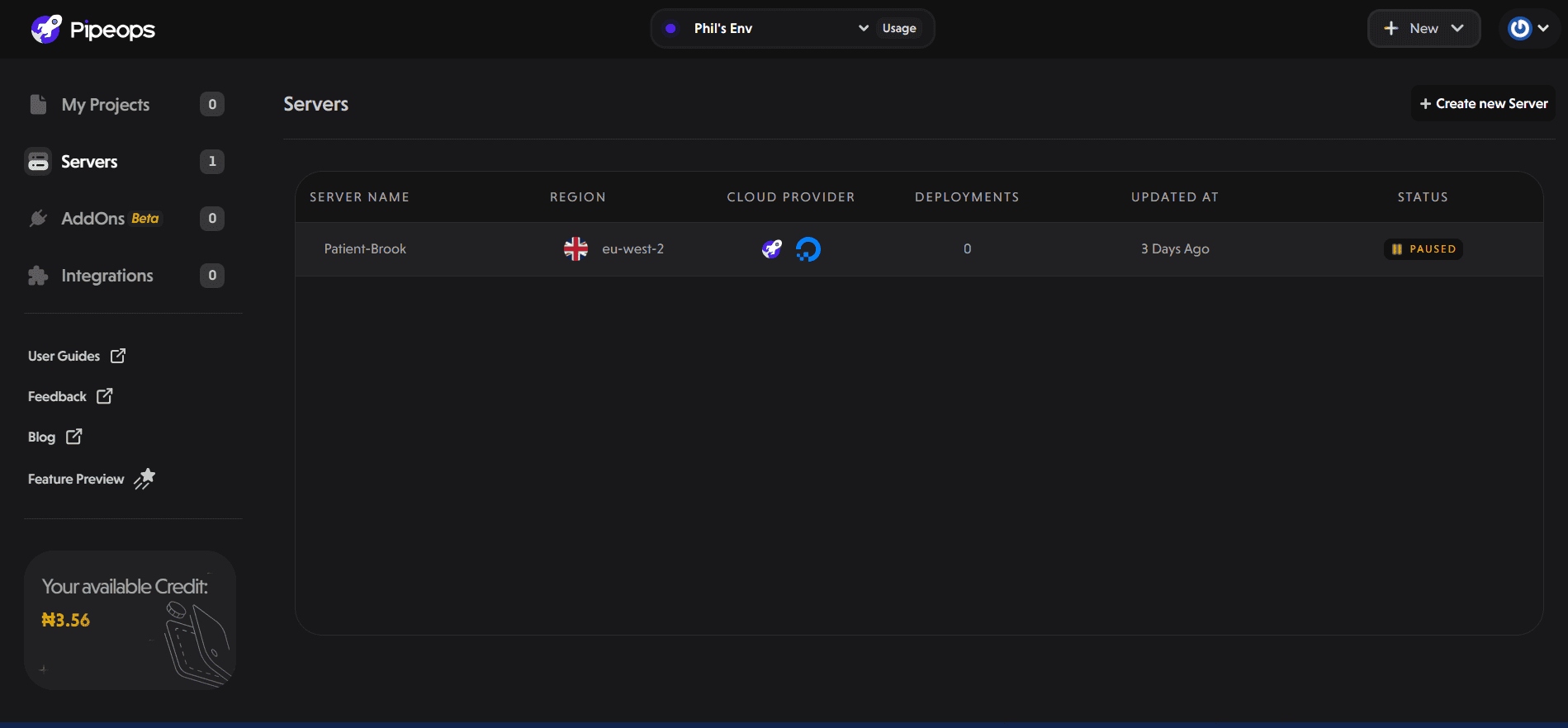PipeOps vs Netlify: Deploy to the Cloud with Ease
Cloud deployment platforms aren’t one-size-fits-all. Whether you’re launching a static site or a complex full-stack app, the right tool depends on how much flexibility, control, and scalability you need. Both PipeOps and Netlify make it easy to deploy projects to the cloud, but they serve different use cases and audiences.
This article explores what each platform is best suited for and which to choose depending on your project goal.
TL;DR: PipeOps allows you to deploy any application or service, from static sites to complex backends. Netlify shines for frontend hosting.
PipeOps and Netlify support modern web app deployment, but they serve different needs. Netlify is ideal for frontend projects like static sites and JAMstack apps. PipeOps supports those too, but also goes further, with support for backend APIs, databases, background workers, and jobs. It provides flexibility and DevOps automation, all without requiring deep infrastructure knowledge.
What Netlify Offers Developers
Netlify is a developer-friendly platform tailored mainly for frontend developers. It allows you to deploy static sites and frontend frameworks (like React, Vue, Svelte) with Git-based CI/CD. With features like serverless functions, global CDN, and automatic HTTPS, Netlify simplifies what used to be complex hosting setups.

Where Netlify Falls Short
Netlify shines when it comes to static site hosting, serverless functions, and streamlined CI/CD pipelines. However, these same features can become limiting as your project grows more complex, like needing background jobs, custom backend logic, persistent databases, or full containerized infrastructure.
Here are some common pain points:
- Backend constraints: Netlify’s serverless functions are great for lightweight logic, but not ideal for full APIs, background processing, or persistent services.
- Unexpected costs: Netlify is cost-effective at first, but as your usage increases, especially in terms of build minutes and bandwidth, the pricing can quickly escalate.
- Limited control: Netlify abstracts away the underlying infrastructure, which is great for simplicity. However, it also means you have no access to server-level specs and metrics.
As projects evolve, many teams run into Netlify’s limits. Juggling external services or needing backend features that serverless just can’t handle.That’s where PipeOps comes in: designed to handle not just your frontend, but your entire stack.
What Makes PipeOps Different?
PipeOps simplifies the process of creating servers and deploying applications to the cloud. It gives you DevOps automation without the hassle. You can provision infrastructure, deploy code, manage databases, schedule jobs, and monitor performance, all from a clean UI. The platform is designed to support applications from basic static sites to complex enterprise-grade architectures seamlessly.

PipeOps also supports Bring Your Own Cloud (BYOC), so you can deploy to your own cloud account, or use PipeOps Nova, the managed server option.
If you’re building a simple frontend site or portfolios, Netlify might be a great choice. However, when your needs go beyond static hosting like deploying full backend APIs, integrating databases, or managing multiple environments, PipeOps is purpose-built for you.
PipeOps' Advantages for Development Teams
PipeOps is designed to support your entire application lifecycle, from provisioning infrastructure and deploying code to scaling, monitoring, and managing updates over time. It allows you to start simple, whether it’s a frontend project or a single service, and scale seamlessly as your app grows in complexity. Its advantages include:
- Seamless full-stack deployment: PipeOps makes it easy to deploy both frontend and backend services, along with databases. Whether you're running microservices or a monolithic app, everything can be deployed effortlessly.
- Integrated support for stateful services: PipeOps makes it simple to add and manage databases like PostgreSQL, MySQL, MongoDB, Redis, and more. These services are available through its addon feature directly from the dashboard, so you don’t have to manage external providers or tools. Most importantly, they are billed the same as any other service on PipeOps.
- Supports worker/cron jobs: Need to run cron jobs or queue workers? PipeOps supports long-running processes and background tasks out of the box.
- Powered by Kubernetes without the overhead: PipeOps gives you Kubernetes-level performance and resilience without requiring deep Kubernetes knowledge. It handles autoscaling, self-healing, and orchestration behind the scenes.
- Production-grade observability: PipeOps provides logging, metrics, and monitoring built-in. You can view logs, monitor app performance, and troubleshoot issues, all without needing to set up external services.
- Deploy anywhere: With Bring Your Own Cloud (BYOC) support, you can deploy across your own cloud providers account, from AWS and GCP to Azure, Huawei, and Digital Ocean. Avoid vendor lock-in and keep full cost visibility.
- Private Networking: PipeOps enables secure, private communication between your services, such as your backend and database, without exposing them to the public internet. Internal traffic stays isolated, reducing security risks and improving performance across your deployment.
- Pricing & Payments: PipeOps offers straightforward, resource-based pricing that scales with your needs. It supports payments through Paystack, making it easier for developers in countries like Nigeria to pay in their local currencies.
The Bottom Line
Both PipeOps and Netlify simplify cloud deployment, but they’re built for different use cases. Netlify is a great choice for frontend developers who want fast static hosting with minimal setup. PipeOps, on the other hand, is built for developers and enterprises who need support for modern, production-ready applications. It’s designed to handle your entire stack, from frontend to backend, without the usual DevOps complexity. Where others halt, PipeOps keeps going. You can start simple and scale on your own terms.
Ready to scale beyond static hosting? Get started with PipeOps and deploy your applications with confidence.